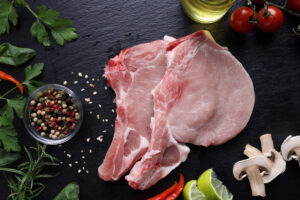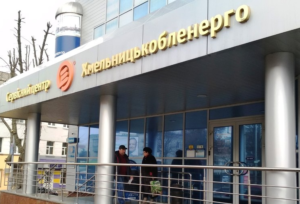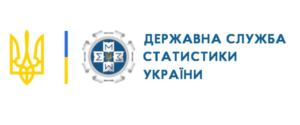
Purchasing prices for pork remained relatively stable at the beginning of June, at 92-94 UAH/ton, according to the Ukrainian Pig Farmers Association (ASU) based on the results of its weekly monitoring of purchasing prices.
“The first summer trades ended with stable quotations for most operators or a slight correction of 0.5-1 UAH/kg for some market players. Therefore, prices for live pigs this week mostly fluctuated within the range of 92-94 UAH/kg, although there were both higher and lower offers. The latter, in particular, concern the sale of animals in poor condition,” the analysts explained.
According to their information, thanks to positive price changes in the east and south, where the shortage of live cattle is more acute, the average market price stood at 92.8 UAH/kg, which is 0.3% higher than a week earlier.
At the same time, experts noted that the green holidays passed almost unnoticed for the meat market. Therefore, meat processors do not expect a surge in consumer activity in the near future. Some of them hope that improved weather conditions and the approaching holiday season will revive trade and prevent refusals/returns at the final stage of sales.
At the same time, processors are preparing for increased pressure from seasonal factors on pork supply. Although the feedback and mood of processing companies currently vary, most tend to believe that purchase prices at upcoming auctions will remain unchanged, as consistently low sales are offset by a modest supply of live pigs, the industry association concluded.

The Poltava Oil Extraction Plant (POEZ) of the Kernel agricultural holding has officially switched to renewable energy sources certified by the international organization Bureau Veritas Group, the company’s press service reported on Facebook.
According to the report, the agricultural holding will fully supply POEZ with renewable energy from sunflower husks, thereby reducing its dependence on fossil fuels and cutting greenhouse gas emissions by more than 11,000 tons per year. In addition, autonomous power generation will ensure continuity of production and reduce risks to food security.
“This is another step towards transforming Ukraine into a sustainable, energy-independent, and innovative country that knows how to turn agricultural resources into strategic advantages. Now our consumers can make an informed choice and contribute to the green recovery of the country’s economy by supporting a producer of certified sustainable oil,” Kernel emphasized.
It is specified that POEZ became the first company in Ukraine’s food sector to join the Science Based Targets Initiative (SBTi). In addition, it intends to support communities and supply surplus “green” energy to Ukraine’s power grid.
“This step is part of Kernel’s efforts to decarbonize and ensure climate resilience at every stage of our work: from the field to logistics,” the agricultural holding summarized.
The Poltava OEZ of the Kernel agricultural holding specializes in the production of sunflower oil under the Stozhar trademark. Previously, oil under this brand was produced in Vovchansk (Kharkiv region). With the start of the full-scale invasion of Ukraine by the Russian Federation, the work of the SEZ in Vovchansk was suspended and its capacities were transferred to the Poltava region. Before the war, the processing capacity of the Vovchansk SEZ was 330,000 tons of sunflower seeds per year. In turn, the Poltava SEZ is designed to process up to 430,000 tons of sunflower seeds per year and produces unrefined, refined, and hydrated vegetable oil, as well as meal.
Before the war, the Kernel agricultural holding company ranked first in the world in the production of sunflower oil (about 7% of world production) and its export (about 12%). It is one of the largest producers and sellers of bottled oil in Ukraine. In addition, it is engaged in the cultivation and sale of agricultural products.
In the first nine months of 2025, Kernel increased its net profit by 7% to $218 million, with revenue growing by 19% to $3.092 billion and EBITDA increasing by 4% to $398 million.

On June 12, PJSC Khmelnytskoenergo announced a tender for compulsory motor third-party liability insurance for owners of land vehicles, according to the Prozorro electronic public procurement system.
The expected cost of the services is UAH 4.209 million. Documents for participation in the tender will be accepted until June 20. The winner of a similar tender a year ago was Guardian Insurance Company.

Extreme heat now poses a greater threat to human life than floods, earthquakes, and hurricanes combined, according to Reinsurance News, citing a recently published report by global reinsurance company Swiss Re (Zurich, Switzerland) SONAR for 2025. In its annual report, which tracks new risks affecting insurers and global systems, extreme heat is considered a major problem not only because of its impact on health, but also on various industries and infrastructure.
According to Swiss Re, up to half a million people die each year as a result of extreme heat, which exceeds the combined death toll from other major natural disasters.
“Extreme heat used to be considered an ‘invisible danger’ because its effects are not as obvious as those of other natural disasters. Given the clear trend toward longer and hotter heat waves, it is important that we highlight the true cost to human life, our economy, infrastructure, agriculture, and healthcare systems,” said Swiss Re Group Chief Economist Jérôme Egeli, quoted in the report.
The data confirms this shift. In July 2024, for example, the three hottest days in recorded global history were observed. In the United States, heat waves have tripled in frequency since the 1960s, with each wave now lasting a whole day longer and reaching temperatures almost one degree Celsius higher.
The impact on public health is increasingly evident: approximately 480,000 deaths are recorded each year due to extreme heat. In addition, it can lead to exhaustion, heatstroke, and organ failure, as well as exacerbate chronic cardiovascular and respiratory diseases. The most vulnerable groups are the elderly and pregnant women.
Swiss Re points out that the consequences go far beyond health. In particular, heat waves combined with strong winds dramatically increase the likelihood of forest fires. For example, over the past decade, insurance losses related to forest fires worldwide have reached nearly $78.5 billion.
The report also identifies critical points of impact in key industries. For example, the telecommunications sector is vulnerable to disruptions as rising temperatures threaten the functioning of data centers and physical networks, including underground cables.

Ukraine’s negative foreign trade balance in goods in January-April 2025 increased by 48.5% compared to the same period in 2024, reaching $11.512 billion from $7.755 billion, according to the State Statistics Service (Gosstat).
According to its data, exports of goods from Ukraine during the specified period compared to January-April 2024 decreased by 6.9% to $13.312 billion, while imports increased by 12.6% to $24.824 billion.
The statistics agency specified that in April 2025, compared to March 2025, seasonally adjusted exports decreased by 4.4% to $3.369 billion, and imports decreased by 2.3% to $6.529 billion.
The seasonally adjusted foreign trade balance in April 2025 was negative at $3.161 billion, as it was in the previous month at $3.163 billion.
The export-to-import coverage ratio in January-February 2025 was 0.54 (in January-April 2024, it was 0.65).
The State Statistics Service reported that foreign trade operations were conducted with partners from 217 countries around the world.
Earlier, the Experts Club information and analytical center released a video analysis of the Ukrainian and global economies, more details here –
https://youtu.be/LT0sE3ymMnQ?si=0Cstf1AY9xZ4Dxxx

One of Ukraine’s largest grain market operators, Nibulon, has signed a contract with the seaport of Chornomorsk for the transshipment of up to 1 million tons of agricultural products in preparation for the new marketing year, the grain trader’s press service reported on Facebook.
The agricultural holding noted that the signing of this contract was a decisive step in the formation of a flexible logistics model that will allow Nibulon to maintain continuity of exports even without access to its own terminal. In addition, despite the surplus of transshipment capacity on the market, the company managed to achieve a balance of interests. Furthermore, optimized regional logistics will help create added value for Ukrainian farmers.
“Our volume and stability are tools that protect farmers. We work with over 3,000 small and medium-sized agricultural producers who, thanks to efficient logistics, receive competitive purchase prices, allowing them to plan and develop even in difficult conditions,” emphasized Sergey Kalkutin, Nibulon’s logistics director.
The company also emphasized that negotiations with other port operators are currently ongoing.
Before the war, Nibulon cultivated 82,000 hectares of land in 12 regions of Ukraine and exported agricultural products to more than 70 countries around the world. In 2021, the grain trader exported a record 5.64 million tons of agricultural products and delivered record volumes to foreign markets in August (0.7 million tons), in the fourth quarter (1.88 million tons), and in the second half of the year (3.71 million tons).
It is currently operating at 32% of its capacity, has created a special unit for demining agricultural land, and has been forced to move its central office from Mykolaiv to Kyiv.